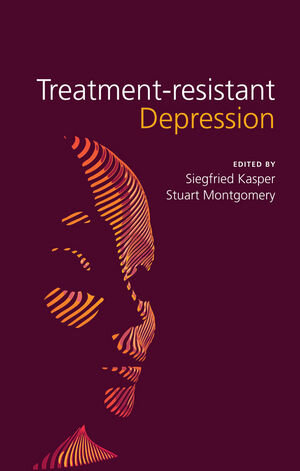
×
![Buchcover ISBN 9781118556733]()
„After all, this book is recommended for the youngpsychiatrist, who wants to read an easy introduction to thefascinating world of treatment of resistantdepression.“ (Acta Psychiatrica Scandinavica, 9November 2013)
„This is a monograph, which could be of great interest topsychiatrists managing patients with TRD. The chapters are writtenclearly, and the references are comprehensive andup-to-date.“ (Human Psychopharmacology: Clinical& Experimental, 6 November 2013)
„The editors should be congratulated for accomplishing theamazing feat of presenting so much information in such a compactbook. With an investment of just a few hours, readers can beupdated on a very complicated subject . . . The editors should becommended on detailing a variety of treatment options, includingnonpharmacological options, which other books fail toemphasize.“ (Doody's, 23 August 2013)
Successful management of patients with treatment-resistantdepression is going to require a thorough understanding of thebiological basis for both the depression and its failure to respondto standard treatments. This book clearly and succinctly summarizesthe latest scientific research and its applications inclinical practice.
A first step is a clear definition of what constitutestreatment-resistant depression so that clinical trials and otherstudies are using common criteria, enabling comparison andmeta-analysis of their outcomes. The opening chapter reviewsdefinitions and predictors of originating from different fields anddiscusses their usefulness in clinical practice and clinicalresearch. The next chapter proposes a new definition, adapting terminology from medicine.
Biological classification requires identification of geneticrisk factors: with gene variants accounting for 50% of the variancein the clinical outcomes of antidepressant treatments this isclearly a fruitful area of research. Chapter 3 describesseveral genes already associated with treatment-resistantdepression and, while further work is needed to translate findingsinto clinical recommendations, predicts that genetic prediction ofTRD could became a widespread clinical reality within a fewyears.
Most patients with TRD will be treated pharmacologically andthree chapters review the latest evidence for pharmacological bestpractice, including switching strategies for antidepressants, therole of antipsychotics and augmentation strategies to complementlithium.
There are two major alternatives to pharmacotherapy: neuromodulation and psychotherapy. The brain interventionchapter summarizes clinical research and experience withelectroconvulsive therapy, transcranial magnetic stimulation, vagusnerve stimulation, deep brain stimulation and magnetic seizuretherapy. The final chapter reviews the literature pertainingto the effectiveness of various forms of psychotherapy in patientswho have not responded to antidepressant pharmacotherapy, revealingthat patients who have not responded to one or two trials ofantidepressant medication have a 30%-50% chance of responding to afocused psychotherapy. It proposes indications forpsychotherapy in TRD and summarizes general therapeuticprinciples.
A first step is a clear definition of what constitutestreatment-resistant depression so that clinical trials and otherstudies are using common criteria, enabling comparison andmeta-analysis of their outcomes. The opening chapter reviewsdefinitions and predictors of originating from different fields anddiscusses their usefulness in clinical practice and clinicalresearch. The next chapter proposes a new definition, adapting terminology from medicine.
Biological classification requires identification of geneticrisk factors: with gene variants accounting for 50% of the variancein the clinical outcomes of antidepressant treatments this isclearly a fruitful area of research. Chapter 3 describesseveral genes already associated with treatment-resistantdepression and, while further work is needed to translate findingsinto clinical recommendations, predicts that genetic prediction ofTRD could became a widespread clinical reality within a fewyears.
Most patients with TRD will be treated pharmacologically andthree chapters review the latest evidence for pharmacological bestpractice, including switching strategies for antidepressants, therole of antipsychotics and augmentation strategies to complementlithium.
There are two major alternatives to pharmacotherapy: neuromodulation and psychotherapy. The brain interventionchapter summarizes clinical research and experience withelectroconvulsive therapy, transcranial magnetic stimulation, vagusnerve stimulation, deep brain stimulation and magnetic seizuretherapy. The final chapter reviews the literature pertainingto the effectiveness of various forms of psychotherapy in patientswho have not responded to antidepressant pharmacotherapy, revealingthat patients who have not responded to one or two trials ofantidepressant medication have a 30%-50% chance of responding to afocused psychotherapy. It proposes indications forpsychotherapy in TRD and summarizes general therapeuticprinciples.



